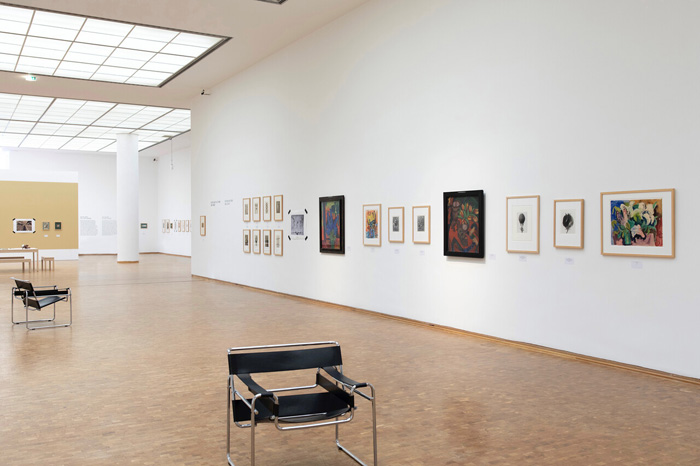Press Release
What do plants mean to human beings? The exhibition Green Modernism: The New View of Plants takes us back to the early 20th century and examines the depiction of plants in the visual arts and how they were viewed in botany and society in general. After all, as plain as potted plants in pictures may appear at first glance, and as matter-

Green Modernism: The New View of Plants
Museum Ludwig, Cologne (Germany)
17.09.2022 - 22.01.2023

The Plant as the other
At the beginning of the 20th century cactuses were “unted”in the Americas in order to be grown and sold on the German market. In this respect, indoor gardens, which were cultivated, sung about, photographed, and painted, were colonial gardens. Those who wanted to be modern filled their homes with cactuses, rubber trees, and other plants that grew outdoors only in warmer climates. Aenne Biermann photographed her own collection of cactuses and the art historian Rosa Schapire had Karl Schmidt-
The appropriated plant
After 1918, the New Woman, wearing floral dresses, continued to pay homage to Flora, the goddess of flowers. In a time of increasing “ender disorder,”when short hair no longer marked a woman’ sexual identity and Magnus Hirschfeld conducted gender reassignment surgeries, flowers remained prominent in fashion—nd underneath people’ clothing, namely as tattoos.
The plant as form and color
The photographer Karl Blossfeldt was not interested in the names and functions of plants. What intrigued him was their form, which he revealed by pruning the plants he photographed—ften to the point of nonrecognition so they could be used by artisans as reference material for their designs. Others, like the artist Karl Schmidt-
The plant as relative
The philosopher Walter Benjamin was not the only one who was fascinated by photographs of plants under the microscope and time-
Eco-
Green Modernism: The New View of Plants is a pilot project in eco-
The Museum Ludwig is able to conserve resources and emit less CO2 by working with its own collection, since this requires less shipping and packing of artworks. And yet, Green Modernism won’ do without pictures from outside of the museum's own collection—ust without original works. The catalogue will be published online only at green-
Claudia Roth, Commissioner to the Federal Government for Culture and Media, is acting as patron of the exhibition.
The exhibition is sponsored by the Freunde des Wallraf-
Curator: Miriam Szwast, advised by Suzanne Pierre
View of Green Modernism: The New View of Plants, Museum Ludwig, Cologne, 2022. Photo: Leonie Braun

Exhibition 17 September 2022 -

© ArtCatalyse International / Marika Prévosto 2022. All Rights Reserved